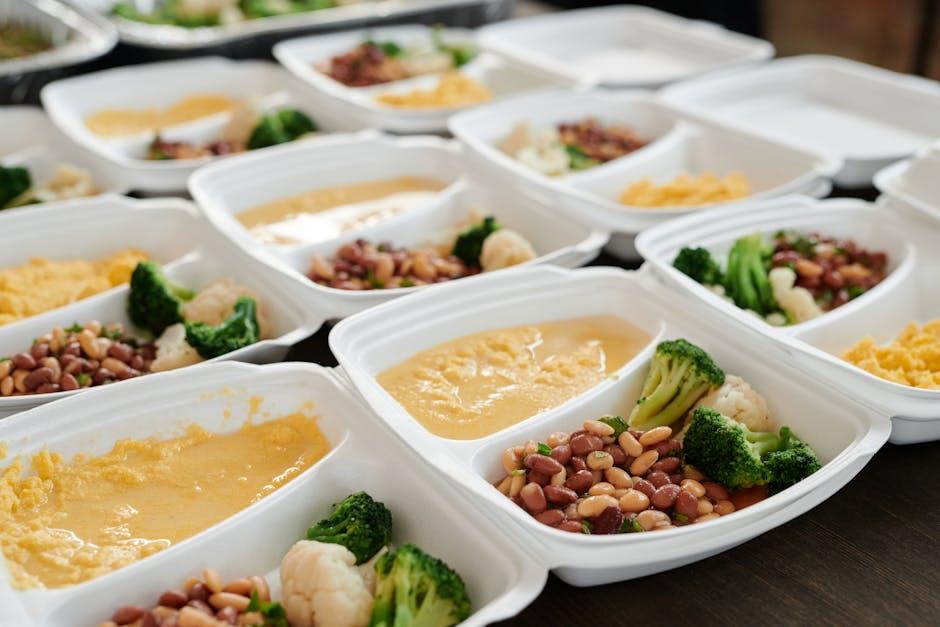In an era where health consciousness is increasingly taking center stage, the quest for a sustainable and effective meal plan that promotes weight management has become a common pursuit. Crafting a slimming meal plan that seamlessly integrates into the complexities of daily life is not just a dietary challenge but a strategic endeavor. This article delves into the analytical process of designing a meal plan tailored to individual lifestyles, focusing on nutritional balance, personal preferences, and practicality. By examining key components such as caloric needs, macronutrient distribution, and meal timing, we aim to provide a comprehensive guide that empowers you to create a meal plan that not only supports your weight loss goals but also complements your unique lifestyle. With a confident approach, we will explore evidence-based strategies that transcend fad diets, offering you a roadmap to a healthier, more balanced way of eating that fits seamlessly into your life.
Understanding Nutritional Needs and Caloric Balance
Grasping the fundamentals of nutritional needs and maintaining a caloric balance is pivotal when crafting a meal plan that aids in weight loss. At its core, this involves understanding the energy your body requires for daily functions versus the calories consumed through food. Here are some key aspects to consider:
- Basal Metabolic Rate (BMR): This is the number of calories your body needs at rest to maintain vital functions such as breathing and circulation. Calculating your BMR provides a baseline for determining your caloric needs.
- Activity Level: Physical activity increases your caloric needs. Factor in your level of daily activity to ensure you’re accounting for these additional calorie requirements.
- Nutrient Density: Focus on foods that offer high nutritional value relative to their calorie content. This ensures you’re getting essential vitamins and minerals without excessive calories.
Balancing these elements helps you create a meal plan that not only supports weight loss but also promotes overall health. By aligning your food intake with your body’s energy expenditure, you can achieve a caloric deficit conducive to shedding pounds, all while feeling nourished and energized.

Strategically Incorporating Macronutrients for Optimal Satiety
When crafting a meal plan that supports weight management, understanding the role of macronutrients in satiety is essential. Protein, fats, and carbohydrates each play unique roles in keeping hunger at bay. Proteins are known for their ability to enhance the feeling of fullness, thanks to their complex structure that takes longer to digest. Consider incorporating lean sources such as chicken, tofu, or legumes to ensure you are satiated without unnecessary calories.
Fats, though calorie-dense, are crucial for prolonging satiety due to their slow digestion rate. Opt for healthy fats like avocados, nuts, and olive oil to add richness and flavor to your meals. Carbohydrates should not be overlooked, as they are vital for providing energy and fiber. Choose complex carbohydrates like quinoa, sweet potatoes, and whole grains to maintain steady blood sugar levels and prevent energy crashes. By strategically combining these macronutrients, you can create meals that not only satisfy your hunger but also support your slimming goals.
- Proteins: Chicken, tofu, legumes
- Fats: Avocados, nuts, olive oil
- Carbohydrates: Quinoa, sweet potatoes, whole grains

Customizing Meal Timing and Frequency for Enhanced Metabolism
To boost your metabolism, aligning your meal timing and frequency with your body’s natural rhythms can make a significant difference. Intermittent fasting, for example, has gained popularity for its potential to enhance metabolic rates by alternating between periods of eating and fasting. This approach can lead to improved insulin sensitivity and promote fat loss. Consuming smaller, more frequent meals is another strategy that can keep your metabolism active throughout the day. This technique can help prevent overeating by stabilizing blood sugar levels and reducing hunger pangs.
- Morning Fuel: Start your day with a protein-rich breakfast to kickstart your metabolism.
- Mid-Morning Snack: Opt for a handful of nuts or a piece of fruit to keep energy levels stable.
- Balanced Lunch: Include lean proteins, healthy fats, and complex carbohydrates.
- Afternoon Boost: Consider a light snack like yogurt or a smoothie to maintain focus and energy.
- Evening Meal: Finish with a lighter dinner that is easy to digest, focusing on vegetables and lean proteins.
By customizing your meal schedule to suit your lifestyle, you can effectively manage hunger and energy levels, ultimately supporting your weight loss goals. Remember, the key is consistency and listening to your body’s signals.

Evaluating and Adjusting Your Plan for Long-term Success
As you embark on your journey towards a healthier lifestyle, it’s crucial to regularly assess your meal plan’s effectiveness and make necessary adjustments. Begin by tracking your progress through measurable indicators such as weight loss, energy levels, and overall well-being. This will help you identify what’s working and what needs refinement. Consider the following factors when evaluating your plan:
- Nutritional Balance: Ensure your meals are rich in essential nutrients, including proteins, healthy fats, and complex carbohydrates.
- Variety: Incorporate a diverse range of foods to prevent monotony and ensure a broad spectrum of nutrients.
- Flexibility: Allow for occasional indulgences and adjustments based on social events or personal cravings.
Once you’ve identified areas for improvement, don’t hesitate to make changes. This could mean tweaking portion sizes, experimenting with new recipes, or integrating more plant-based options. Remember, the key to long-term success is adaptability. By continuously refining your meal plan, you’ll not only achieve your slimming goals but also cultivate a sustainable, enjoyable approach to eating.
